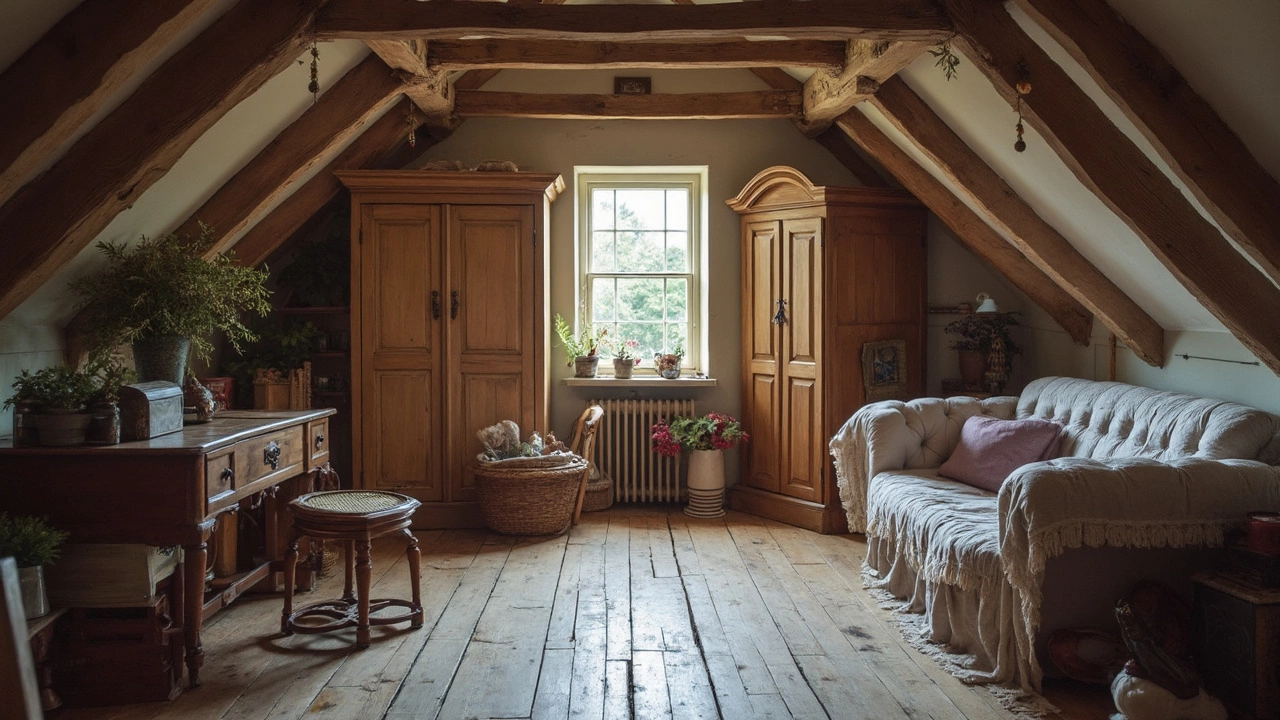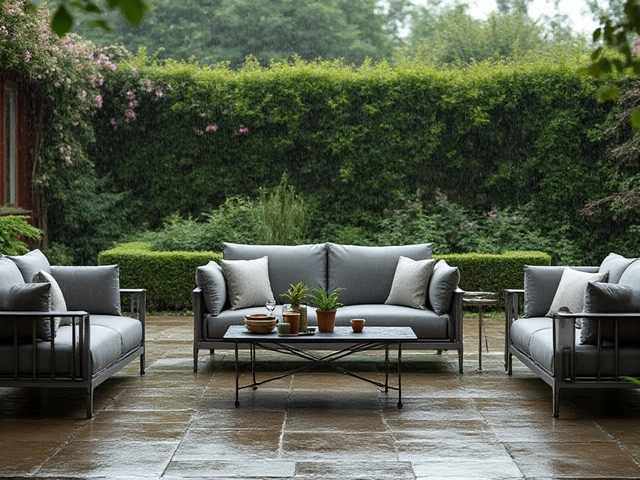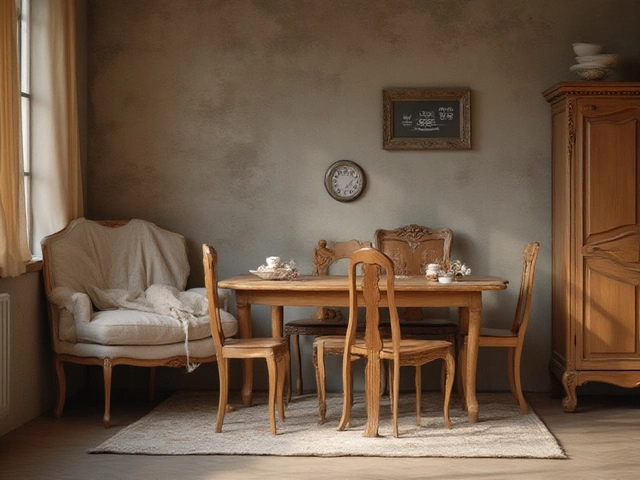You've just bought a new couch, and the old one has to go somewhere, right? So, what about wrapping it up in plastic? It sounds like a neat, easy solution, but let's talk about the risks before you start rolling out the cling film. Plastic might trap moisture, leading to mold and mildew. Nasty business! Trust me; you don't want to find green fuzz when you unwrap it six months later.
If you’re thinking about plastic wrap, consider breathable covers instead. They're like giving your furniture a chance to breathe while keeping the dust away. It's like a fabric hug! Plus, with the UK often being a bit damp, it's necessary to let your furniture breathe.
- The Risks of Plastic Wrap
- Alternatives to Plastic Wrapping
- How to Prepare Furniture for Storage
- Climate Considerations for Storage Units
- Long-term Care Tips for Stored Furniture
The Risks of Plastic Wrap
Wrapping your furniture in plastic might seem like a no-brainer for storing, but it's not always the best plan. Yes, it keeps out dirt and pests, but there's a sneaky downside: moisture. Plastic wrap, as great as it is at sealing things tight, doesn't let air circulate. Think of it like a greenhouse for your sofa—moisture trapped inside can lead to mold.
Especially here in good old UK weather, where we know a fair bit about rain and humidity, that moisture is a real concern. Ever noticed how things get damp quickly in an airtight space? Same idea. Avoid nasty surprises by considering other options.
Condensation Nightmares
When you're dealing with any prolonged storage situation, condensation is the enemy. Moisture buildup isn’t just an eyesore; it can lead to structural damage. Consider wooden furniture—they expand and contract with moisture levels. The last thing you need is warped wood or peeling finish.
Mold and Mildew: The Unwanted Guests
Plastic traps moisture like nobody’s business, setting the stage for mold and mildew. They love dark, damp spaces—kind of like your future wrapped-up armchair. Once mold sets in, it's a pain to remove, and the smell? Yikes!
Breathability: Why It's Crucial
Opt for breathable materials when storing furniture. This prevents moisture entrapment and allows air circulation, protecting your beloved couch or cabinet from unwanted waterworks.
Remember, when it comes to storing furniture, making sure to address these risks keeps everything dry and damage-free.
Alternatives to Plastic Wrapping
Thinking of ditching the plastic wrap for your stored furniture? Good call! Let's chat about better ways to keep those pieces safe while avoiding the pitfalls of trapped moisture and mold. Here are some solid alternatives to consider.
Breathable Fabric Covers
Meet the hero of furniture protection: breathable fabric covers. Made from materials like cotton or polyester, these covers allow air circulation, which helps prevent moisture buildup. They're ideal because they block dust while keeping your furniture fresh.
Old Sheets or Blankets
If you're on a budget or feeling thrifty, don’t throw away old sheets or blankets. They make excellent covers! Just ensure they're clean and dry before draping them over your furniture. Bonus: You’re also reusing something you already have.
Furniture Pads
You know those thick, cushy pads used in moving? They're not just for transport. Furniture pads can offer insulation against temperature fluctuations and bumps during storage. Get some tie-downs to keep them in place. It's like wrapping your furniture in a cozy, protective blanket.
Shrink Wrap for Legs and Movable Parts
Okay, sometimes you *might* want a bit of plastic. Shrink wrap can be handy for securing small parts or the legs of your furniture. Just avoid wrapping entire pieces. Use it as an additional measure to secure what really needs it, and not as the main protective layer.
Wood Polish and Conditioning
This isn't a cover, but it’s a crucial step. Applying a layer of wax or polish to wooden furniture before covering can seal in moisture and prevent dry air from causing cracks. Just a thin layer. It'll keep those surfaces looking great when you finally bring them out.
These alternatives are more than substitutes; they’re upgrades. Remember, when you're storing big-ticket items like furniture, giving it some TLC before it goes into storage will save you a heap of trouble (and cash) later on!
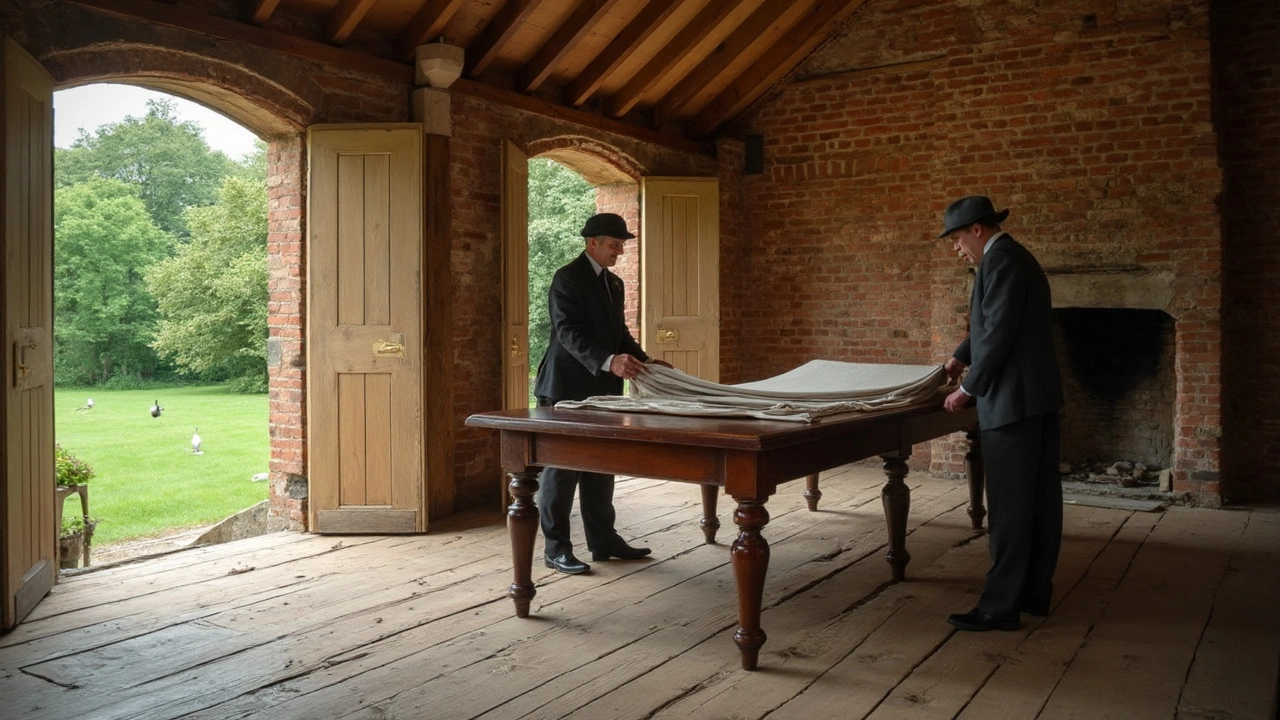
How to Prepare Furniture for Storage
Getting your pieces ready for storage isn't rocket science, but there are a few must-dos to keep in mind. It’s all about adding a little care now to avoid headaches later. Let’s dive into the simple steps you can take to keep your furniture protected during storage.
Clean Your Furniture First
Before stashing away anything, make sure everything is clean. Dust, spills, or crumbs can become stubborn stains over time. Plus, pests love little hidden snacks on your couch! Give it a good vacuum and, if needed, a gentle wipe down with the appropriate cleaner for the material.
Disassemble When Possible
If your furniture can be taken apart, like beds or large tables, do it. This makes it easier to store and move around. Plus, it reduces the risk of damage. Keep screws and small parts in labeled bags so you don’t lose anything important.
Wrap, Don’t Smother
Use breathable covers if you can. Things like old sheets or specialized fabric covers work wonders. Avoid wrapping tightly in plastic as it locks in moisture, which isn’t ideal. You want your wooden furniture or leather pieces to breathe a bit.
Protect Fragile Surfaces
Think about corners, glass surfaces, and delicate finishes. Add some padding like bubble wrap or towels to protect them. Furniture pads can be a lifesaver, especially if you're dealing with garage or outdoor storage spaces.
Check Climate Conditions
Climate control is huge when it comes to storing furniture, especially if you’re tucking it away for a while. Humidity can warp wood and lead to mold. If you’re considering a self-storage facility, opting for a climate-controlled unit could save you a lot of trouble down the line.
| Item | Advice |
|---|---|
| Wooden Furniture | Keep away from moisture, use furniture polish before storing. |
| Leather Furniture | Clean with a leather-safe cleaner, condition to prevent cracking. |
| Glass Surfaces | Add padding, avoid stacking heavy items on top. |
By following these steps, you’ll give your beloved furniture the best possible chance of hibernating safely until you need it again!
Climate Considerations for Storage Units
When you're tucking away your beloved furniture for a while, you want to make sure it stays in great condition. That's why paying attention to the climate inside your storage unit is super important. A damp environment is your furniture's worst enemy, inviting mold and mustiness. Yuck! But no worries, I've got some tips to help you nail the climate game.
Why Temperature Matters
Ever notice how wood furniture swells and shrinks with the weather? Temperature changes are the culprit. Extreme heat can warp wood and crack leather, while freezing temps can make some materials brittle. Finding a climate-controlled storage unit keeps temperatures steady and avoids these nasty surprises. If you can, go for a unit that maintains around 10-21 degrees Celsius; it's like putting your furniture in the Goldilocks zone—not too hot, not too cold.
Humidity's Impact
Let's chat humidity. Too much moisture in the air can damage furniture, just like leaving your bike out in the rain. The ideal humidity is around 55%, which keeps that dreaded mold at bay and prevents wood from swelling. Pro tip: stick a dehumidifier in your storage space to save the day. If you're really into gadgets, some high-tech ones even send you alerts if things get too damp.
Ventilation Is Key
Good ventilation is like letting your storage unit breathe. It reduces humidity and keeps air circulating, stopping moisture from becoming a problem. Look for units with proper ventilation or ask your provider about it.
Here’s a quick checklist to consider for climate-controlled storage:
- Choose a unit with stable temperatures.
- Ensure humidity levels hover around 55%.
- Invest in a dehumidifier for extra protection.
- Check for good ventilation in the unit.
| Recommended Setting | Condition |
|---|---|
| Temperature | 10-21°C (50-70°F) |
| Humidity | Approx. 55% |
By keeping an eye on these factors, you can rest easy knowing your furniture is safe and sound—no surprise mildew or shrinking and swelling episodes. That's one less thing to worry about!
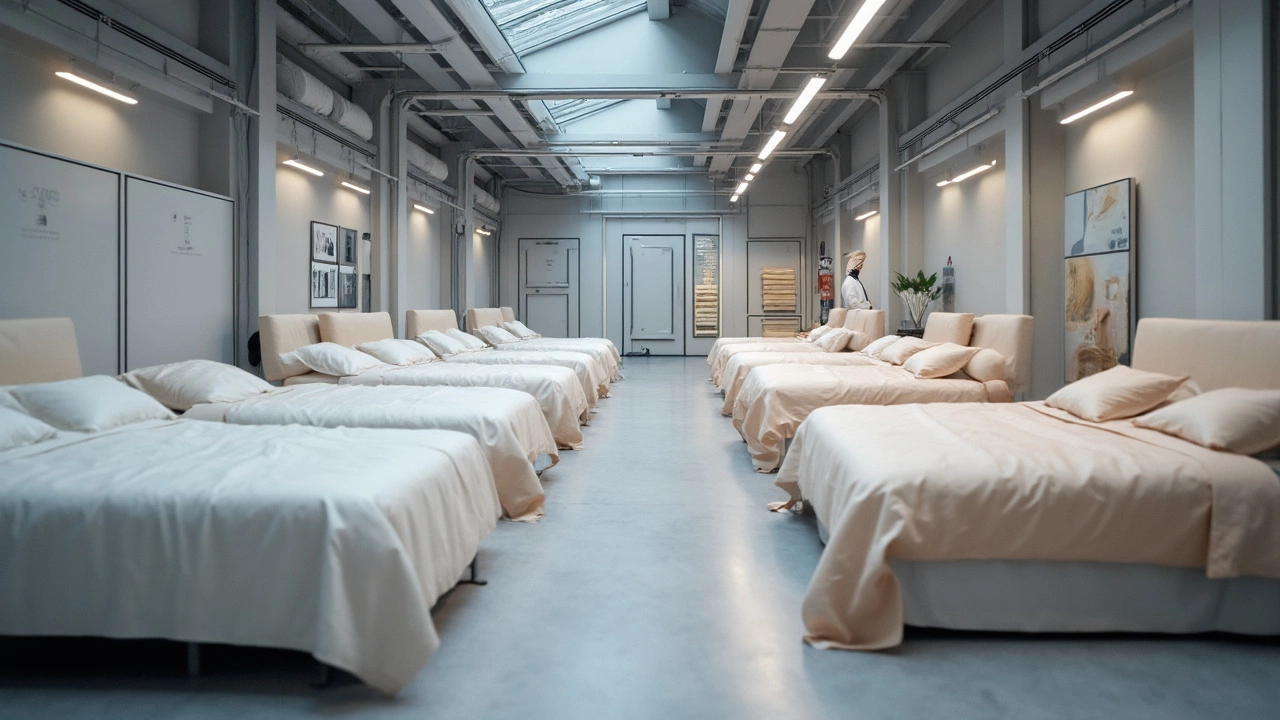
Long-term Care Tips for Stored Furniture
So, you’ve stashed your furniture away, and now you want to ensure it stays pristine for when you need it again. Well, you're in the right place. Knowing how to care for it while it's tucked away will save you from future headaches.
Regular Check-ups
Think of your stored furniture like a plant. It doesn't need daily attention, but a little love now and then goes a long way. It’s a good idea to check on your items at least every couple of months. Walk around, look for any signs of moisture buildup or pests. Catching issues early can save you loads of trouble later.
Keep It Elevated
It's always wise to keep furniture slightly elevated off the storage unit floor. Use pallets or blocks to lift those legs, especially if the area is prone to dampness. This reduces contact with potential moisture that might seep in from below.
"Keeping furniture off the ground not only protects against unexpected leaks but also improves air circulation around the items," says Henry Godwin, a well-known expert in storage solutions.
The Right Cover
Instead of wrapping furniture with plastic wrap, use breathable fabric covers to avoid any moisture getting trapped. Dust sheets or moving blankets are perfect for this. You're protecting your treasures without suffocating them!
Climate Control
If you’re using a storage unit, opting for climate-controlled ones can make a huge difference. These units help maintain a steady temperature and humidity level, reducing risks of warping, cracking, or more nasties like mold.
Clean Before Storing
This might seem obvious, but give everything a thorough cleaning before storage. Dust, wax, and condition surfaces as needed, especially leather. A quick clean ensures dirt doesn't turn into a permanent fixture.
So, there you go – a few steps here can keep your cherished belongings in top shape for whenever you’re ready to bring them back home. No one wants a nasty surprise when they rediscover their stuff!
